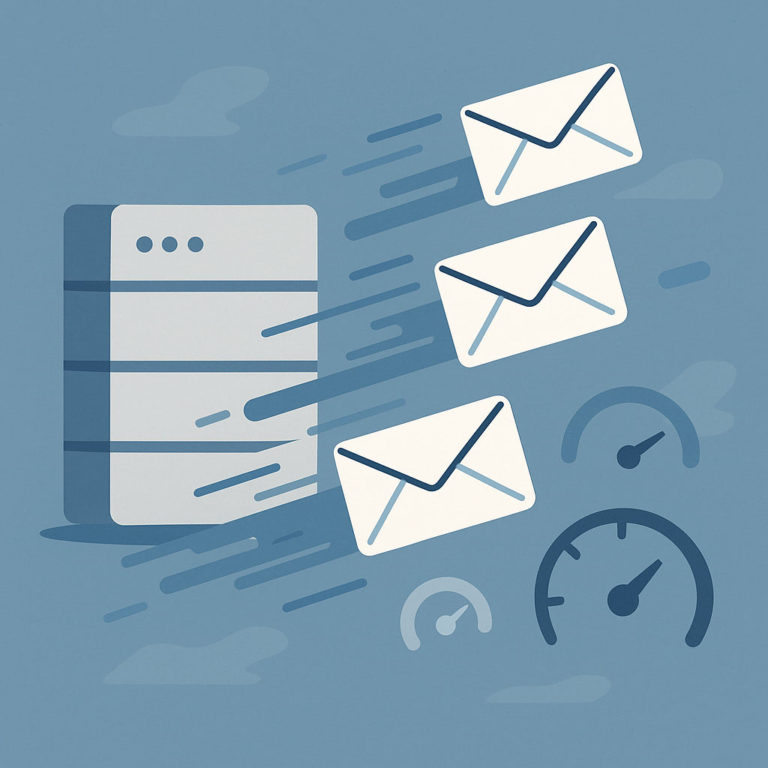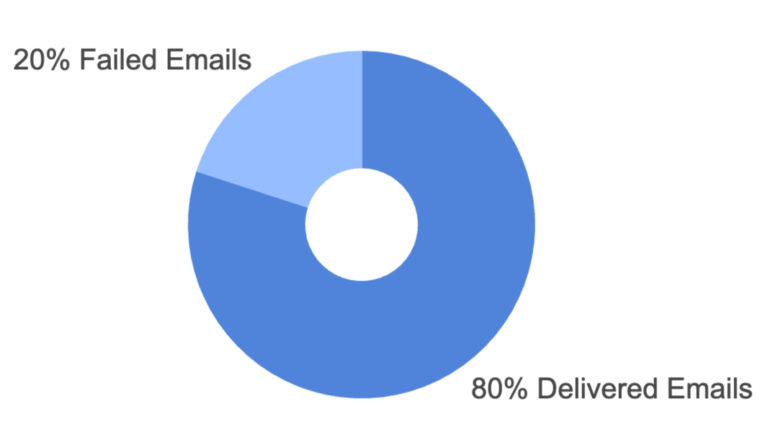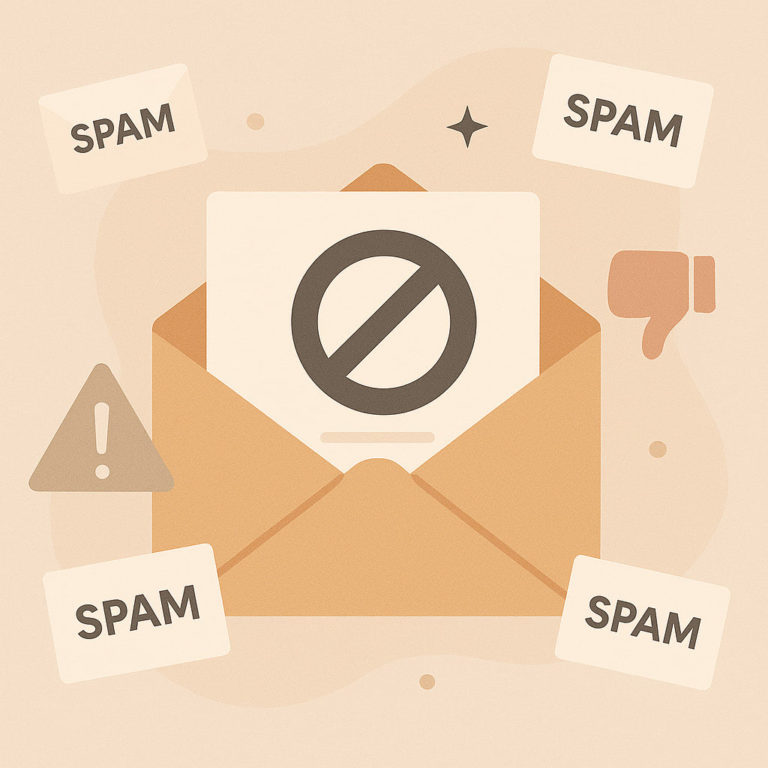You might think you have done a great job by carefully segmenting the subscription list, coming up with a snappy subject line, and creating a compelling email that provides value to customers. However, the harsh truth is that all your efforts could be in vain because your initiatives will only work if your emails get delivered to your subscribers’ inboxes.
According to stats, the average deliverability rate (the one demonstrating the company’s ability to deliver emails to subscribers) is 84.2%. Even if you use the most trusted email marketing platforms, this number will not reach the desired 100%. On top of that, you still risk getting into spam or remaining undelivered. Recent studies show that 20% of all emails go to spam.
So, what to do? How do you not lose your precious resources, money, and time and avoid wasting your perfectly-crafted digital newsletter? How do you get into a subscriber’s inbox, secure your placement, and launch a marketing campaign?
There are several approaches to raise your chances of being delivered. However, first and foremost, you must start fixing email deliverability issues because they will ruin everything. Let’s consider the importance of ensuring a high deliverability rate by mitigating risks and eliminating all possible issues right away.
Fix Email Deliverability
Importance of Fixing Email Deliverability Issues
Fixing email deliverability issues right away is crucial for the company’s success. First, time is money; email marketing is no exception. All delays, procrastination, and failures in delivering emails to subscribers take time and burn some substantial holes in the budget. While big corporations may face these expanses, startups and most companies at the early stages of development cannot afford that.
Second, fixing issues immediately helps the company avoid the aftermath of undelivered digital correspondence. Some companies must start over again, involving new investment and human resources. In contrast, others have to deal with lost opportunities of reaching the target audience at the right time with the right offer. These consequences can be dreadful for the company’s revenue and success.
Third, quick problem-solving exerts control over the current environment and allows for changes to make it more desirable and stable for future operations. In other words, fixing email deliverability issues immediately allows companies to prepare a solid ground for conducting campaigns. It makes adapting to new demands, requirements, and market expectations possible.
Fourth, fixing email deliverability issues without delays addresses possible future risks. Timely response makes detecting the main reason and mitigating or eliminating it easier. Using experience and current events, companies may anticipate what may happen in the future and ipso facto influence the likelihood of the event occurring or avoid this situation.
Fifth, solving problems, whether complex or tricky, helps the company to gain new skills and experience in the field. As a result, over time, they will manage to address problems with a greater degree of complexity and difficulty quickly and efficiently.
Finally, it enables a company to identify and exploit environmental opportunities. Fixing email deliverability issues is also about innovating, creating new things, and revamping the email system and approaches that may lead to better outcomes.
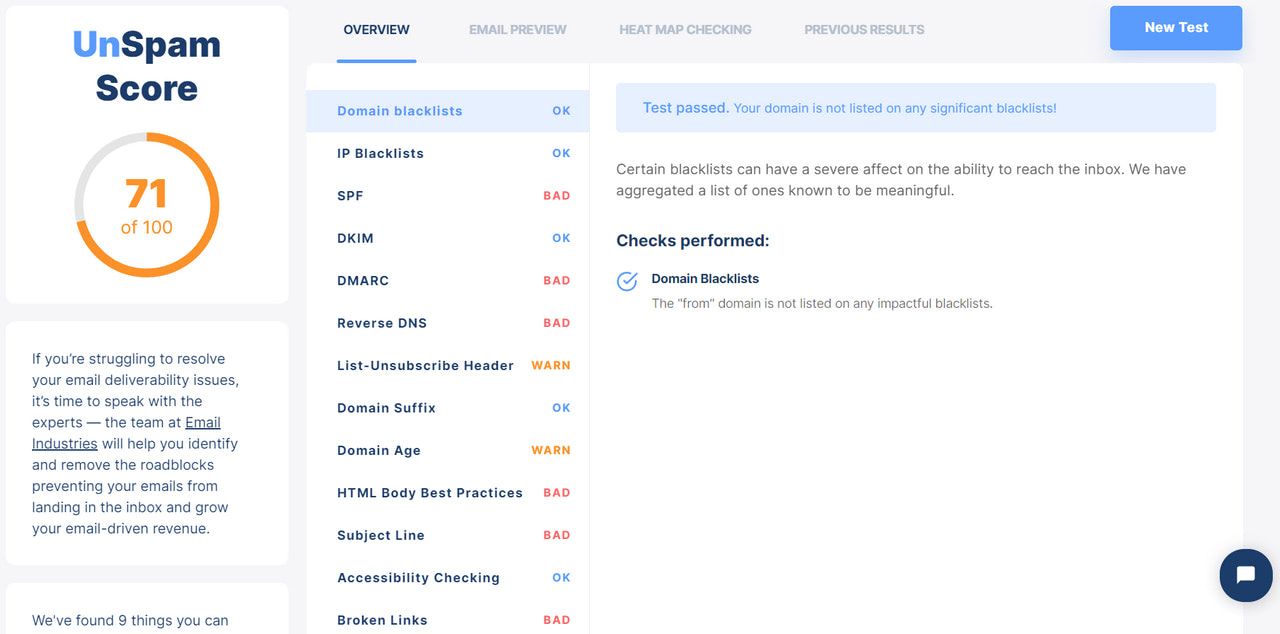
Spam test result by Unspam
Benefits of Having a High Deliverability Rate
Apart from these reasons, finding email deliverability issues with a reliable email spam checker and fixing them timely improves your deliverability rate. In email marketing World, it is the foundation for having an email marketing program and running a successful email marketing campaign. Just consider what benefits a high deliverability rate offers for companies.
- It allows the company to reach more subscribers.
- It amplifies main email marketing metrics: open rates, conversions, and leads.
- It increases ROI by reducing the emails you have to send and resend.
- It improves the delivery system and environment.
- It builds an unrivaled sender’s reputation, enabling running uninterrupted email campaigns.
- It reinforces the brand’s trust and customer loyalty.
- It strengthens customer relationships and encourages continued engagement.
In a word, having a high deliverability rate is the first and the most crucial step in achieving success with your email campaign.
5 Top Reasons for Low Deliverability Rate
There is no better way to start fixing email deliverability issues than to understand the leading causes. After all, preventive measures always give a head start and secure investment and efforts. So, where to dig? Let’s consider some popular reasons why companies experience low deliverability rates.
Poor Sender Reputation
Poor sender reputation stands behind the majority of cases of low deliverability rate. As a score that respected Internet Service Providers (ISPs) such as AT&T or Verizon assign to an organization that sends an email, it determines if the emails should be delivered to the inboxes, rejected, or sent to the spam.
The sender score is calculated based on multiple factors that describe the company’s behavior, email system, email content, and health of the subscription list. It is also a composite quantity comprising IP address reputation and domain reputation.
Every ISP has its algorithm and criteria to calculate it. Unfortunately, there is no united approach. However, one thing is in common: the higher the sender’s score, the more likely you are to deliver your digital newsletter to the subscriber’s door.
Since the sender’s reputation is a complex metric, it is hard to identify the exact issue immediately. Therefore, you need to dig. Professionals suggest starting your search with vital factors that provide insights into the health of the email interaction between the company and recipient. This includes:
- Sending volume;
- Open and click-through rate;
- Spam complaints rate;
- Hard and soft bounce rates.
It would also help if you analyze email engagement and go through the subscription list to identify recipients who no longer interact with your brand.
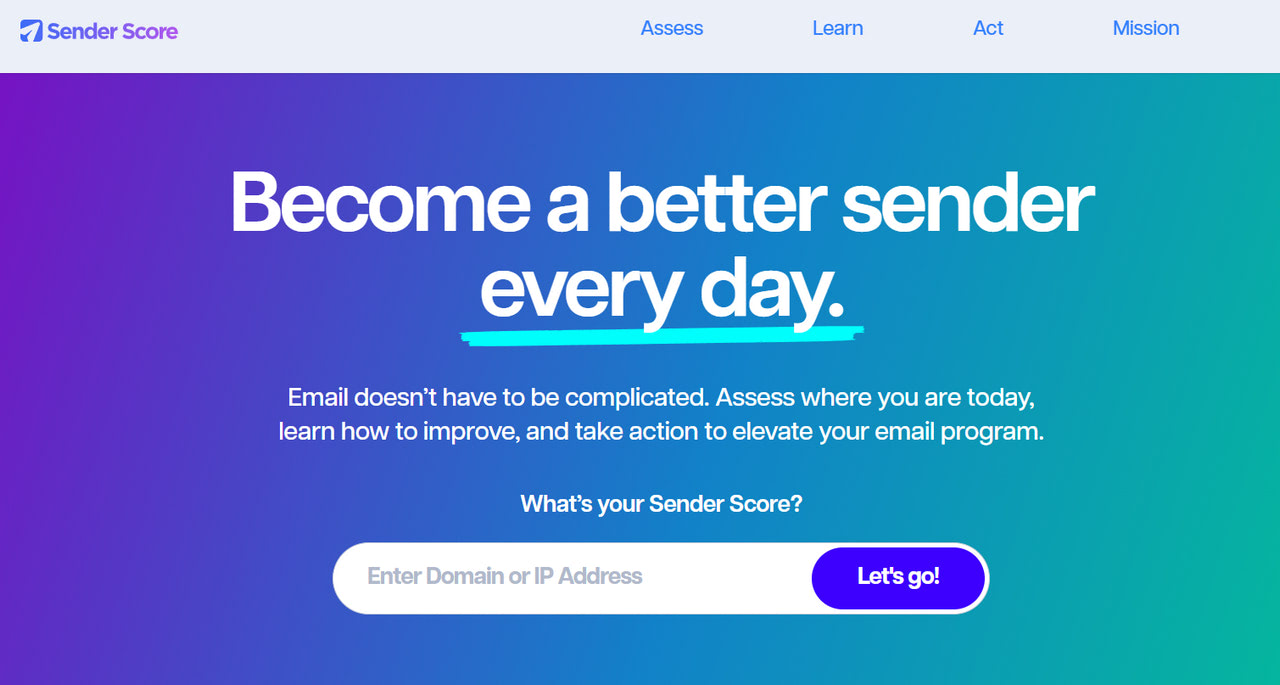
Sender Score – platform to define email sender score
Blacklists
After ruling out the sender’s reputation for having a low deliverability rate, searching through email blacklists should be your next move. Getting into email blacklists, whether big or small, affects everything: email deliverability, sender’s reputation, brand’s reputation, revenue, etc.
The sad truth is that getting there is ridiculously easy, whereas getting out may cost the company time, money, and resources.
Another bad news is that blacklist providers file a whole email server. This means everyone who uses it to send emails, whatever good intentions they have, will be affected.
The worst thing is no one notifies you about that. This means you always face the risks of investing lots of money and time into developing a marketing campaign and getting nothing at the end simply because you are blacklisted and ipso facto, ISPs rejected your newsletter, and your subscribers did not see it at all.
While the best practice is avoiding blacklists at all costs, sometimes even the best of us gets there. Therefore, checking the email blacklist providers regularly is highly recommended. Each service has a handy platform to find out whether your IP or domain is in their database. They also feature a procedure to get unlisted and regain your reputation.
Lack of Email Authentication
Email authentication is among the top three causes for low email deliverability.
Email authentication is the technical way to tell ISPs that an email is not forged. If it is not correctly set up, it may lead to two drastic outcomes. First, your email may end up in the spam folder. Second, it may ruin your sender’s reputation by looking untrustworthy to the ISP.
As a preventive measure, it is highly recommended to authenticate your emails beforehand. Although this can be tricky even for seasoned security professionals, it still needs to be done. Ensure you set up these main email authentication protocols: SPF, DKIM, and DMARC.
If you are unsure whether you have proper authentication, you need to check it with your email service provider or delegate it to professional teams.
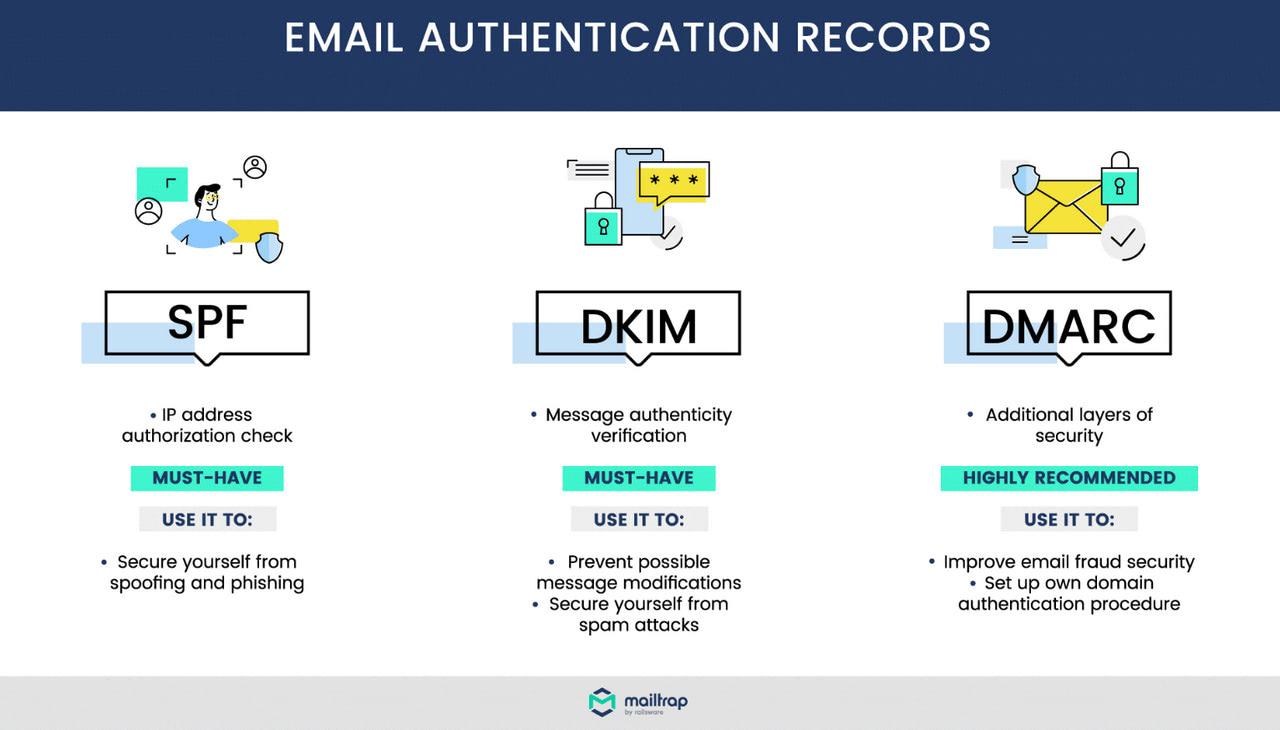
Email authentication – infographics taken from Mailtrap
Sending Volume
It might seem that the more emails you send, the more chances you have to engage subscribers and convert them into leads. However, the bigger the sending volume is, the more chances you have to ruin your email deliverability rate. There are two main reasons for that.
First, no one likes to be bombarded with email, regardless of the sender. You risk increasing spam complaint rates, which directly correlates with a low sender’s reputation and may become the reason for being blocked.
Second, email service providers do not like big sending volumes, especially from young companies. They may consider you a spammer or hacker and also get you blacklisted.
Therefore, start low and slow. If you already have a significant volume, consider segmenting your subscription list to target the most relevant audience for your email marketing campaign. Plus, allocate an individual time slot for each group, decreasing sending volume.
Low-Quality Subscription List
As a startup, buying or harvesting contacts to grow a subscription list within minutes is always tempting. Acquiring subscribers by tricking them or giving something away is also enticing. However, this is the worst thing you can do for your company.
The deal is that rapidly growing subscription lists are bound to have spam traps, non-existent email addresses, and disengaged contacts. The first one will lead you to blocklists. Whereas the rest will ruin the sender’s reputation with a high bounce rate and spam complaints.
Nevertheless, even though everyone knows that quality always supersedes quantity, many companies still end up with poor subscription lists due to these “grey” practices, making it a prime source of deliverability issues.
Therefore, start cleaning up your subscription list if you experience a low deliverability rate. It is highly recommended to use professional email verification services to ensure that every email ID in your list is valid.
Other Factors that Affect Email Deliverability.
Apart from these five significant reasons for getting a low deliverability rate, some other minor yet damaging factors affect email deliverability. They are:
Inconsistent sending frequency.
It may lead to a lower engagement rate that, in turn, decreases the deliverability rate.
Bad timing.
Like defining the right sending frequency, sending emails at the right time is crucial. Otherwise, you risk getting complaints and a low engagement rate, leading to low deliverability.
Overuse of spammy words.
Some words may easily trigger spam filters and block email, impacting overall deliverability.
Poor email content and design.
Not only can spam words stop your email from reaching a subscriber’s inbox, but also many or too big images, broken links, shortened URLs, poorly formatted text, and unresponsive layouts. These factors make the email look malicious; some email service providers may ban them.
High complaint rate.
It is the strongest negative signal to mailbox providers. Keep an eye on it and address complaints right away.
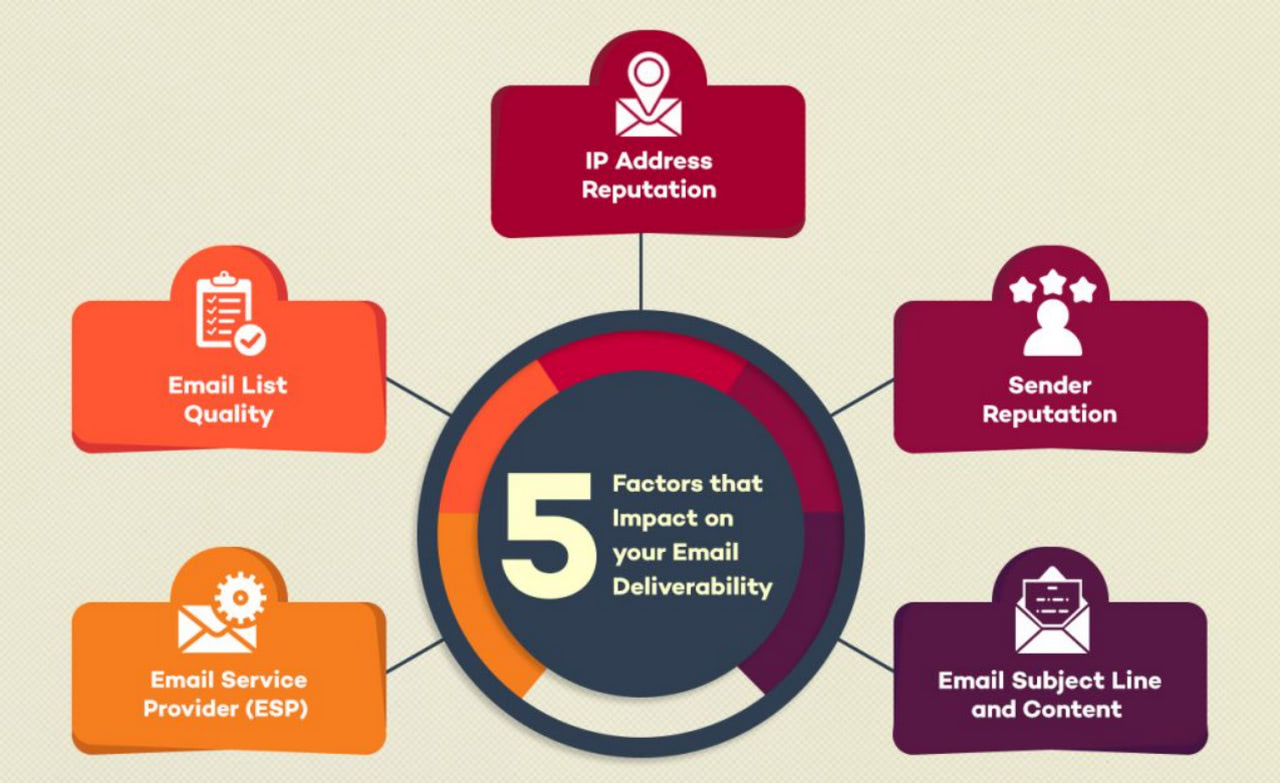
Factors that affect email deliverability – infographic taken from Clearout
Best Practices for Fixing Deliverability Issues
Before jumping to the best practices for fixing deliverability issues, we will highlight the primary indications of a low email deliverability rate.
- The first sign that something is wrong with deliverability is a sudden drop in such metrics as open and click-through rates. A low engagement rate may also warn about problems.
- Second, a sudden spike in the soft bounce rate indicates deliverability issues, especially if it is still high after resending emails.
- Third, faster-than-usual list growth. Unexpected jumps in list size are usually caused by bot signups, which lead to an unhealthy subscription list and ipso facto problems with the sender’s reputation and deliverability.
- Finally, listed by a small email blacklist. Unlike big players, small email blacklists are less damaging. However, they are warning signs that may lead to getting you on the radars of more powerful blacklists.
If you spot some of these signals, it is time for these deliverability troubleshooting.
Get Out of Email Blacklist
Getting into a blacklist is among those drastic scenarios that cut your deliverability rate in half overnight. Therefore, if you see a drastic decrease in deliverability rate, the first thing to do is to check respected blacklist vendors, like Spamhaus, Barracuda, Spamcop, Microsoft 365, and Cisco. Each platform has a handy interface for checking its database. Find their lookup tools, enter the IP address or domain name, and run a search.
What to do if your IP or domain name is on an email blacklist? Each provider has its routine of getting delisted. Familiarize yourself with instructions and review your email practices to meet their standards. Request blacklist removal and wait for approval.
What to do if your IP or domain name is NOT on respected email blacklists? Then, you need to check smaller blacklists. Although most of them do not tend to impact a sender’s inbox placement significantly, but they may escalate the situation. Therefore, it is crucial to ensure you are not listed anywhere.
If you do not have time to do everything manually, you might benefit from professional email blacklist checkers that do all the heavy lifting for you. Go to our list of the best deliverability insights tools below to find the right solution for you.
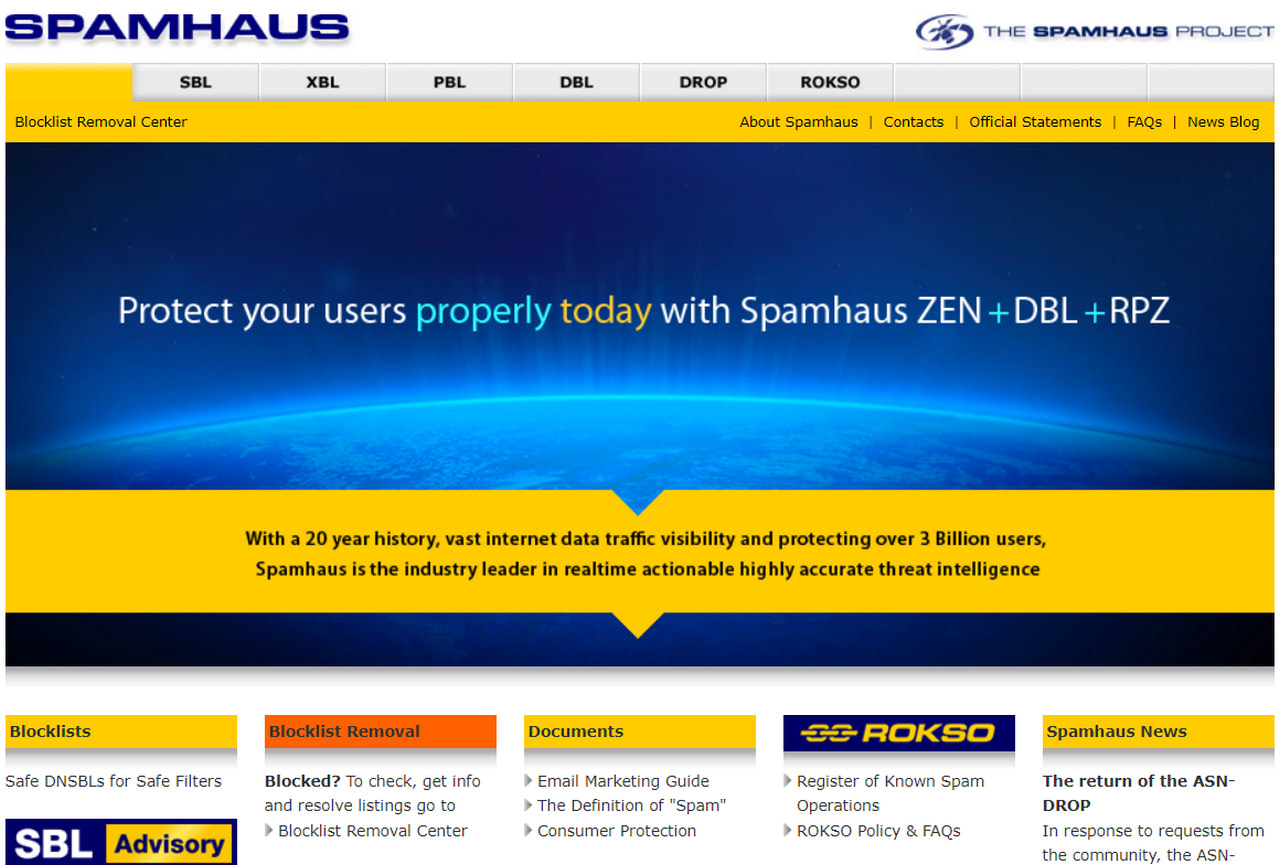
Spamhaus – blacklist removal center
Check Authentication and Infrastructure
Authentication and infrastructure play massive roles in uninterrupted communication between the company and the recipient in the digital email channel. To fix problems with these areas, discover what authentication protocols your ESP offers in its infrastructure. DKIM and SPF need to be in place and properly configured. On top of that, you must consider having DMARC records. As a rule, it comes as an additional feature but is worth the money and hustle. Explore your ESP’s support section and documentation to understand how to become DMARC-compliant.
Clean Subscription List
Cleaning the subscription list involves taking these vital actions:
- Scrubbing email addresses whose owners engage most frequently with the brand.
- Eliminate inactive and invalid email contacts.
- Remove email addresses whose owners have unsubscribed.
- Delete email addresses that have hard-bounced.
- Check for duplicates. Either merge or remove them.
- Correct obvious typos.
- Identify spam emails. You can use professional tools for that or do it manually. As a rule, they look nonsense or, on the contrary, remarkably close to familiar names.
- Ensure all the contact information is in its correct place in the database.
It is crucial to note that cleaning the subscription list should be done regularly because, according to ZeroBounce, at least 22.71% of an email list degrades yearly.

ZeroBounce’s stats
Improve the Sender’s Reputation
This category for fixing email deliverability issues is enormous. It covers everything from creating a snappy subject line to getting an email campaign aligned with the brand identity. So, where to begin? Sender’s reputation depends on many factors; however, these are the most critical:
- Recipient’s engagement;
- Quality of content and design;
- Unsubscription rate;
- Spam traps.
Therefore, start by adopting practices that improve these factors. There are numerous approaches; let’s consider some of them to give you the right direction.
The recipient’s engagement could be enhanced with these tips:
- Correct segmentation.
- Hyper-personalization.
- Eliminating cold subscribers.
- Creating a snappy subject line.
- Meeting subscriber’s expectations.
The unsubscription rate can be decreased by following these basic rules:
- Get only verified and interested people on board by using the double opt-in form.
- Never buy or harvest a subscription list.
- Track the subscriber’s reaction to provide value with the content.
- Never bombard subscribers.
- Send emails at the right time.
- Practice follow-up emails without being too pushy.
Quality of content and design is a vast topic to discuss, from following trends in email design to using Postcards to create mobile-friendly templates fully compliant with CAN-SPAM. Check out this email design guide to understand what needs to be done to ensure email design meets the current standards and the audience’s expectations.
Last but not least, spam traps and how to recover. First of all, get clear on the nature of spam traps. Simply put, they are email addresses. Some were in use once, while others were created on purpose. They aim to identify companies that preach “dirty” ways of acquiring email subscribers. When the sender is caught, the ISP blocks or monitors it closely.
Second, use email validation on contact lists to locate and remove spam traps.
Third, check blacklists to see whether you are not there because encountering spam traps leads to the blacklist.
Finally, practice good email management to avoid spam traps in the first place. At a minimum, this includes introducing a double opt-in for subscribers, keeping contact lists up to date, and practicing permission-based email marketing.
Email design: the ultimate guide with examples
Reconsider Sending Volume
If you are getting too many spam complaints, chances are you have a sending volume that is too big for your audience to handle. Email fatigue is a real thing, which implies wearing down your subscribers and irritating them.
How to fix that? The answer is on the surface – find the right email-sending volume for your target audience. Easier said than done. Unfortunately, there is no surefire way to tell you what the exact number should be best for your email send volume. However, there are ways to get closer to it. Consider these professional pieces of advice.
- Monitor unsubscribes and open rates. If they are at a reasonable level, then you are fine. If they decrease, it is time to minimize sending volume.
- Ask your subscribers to update their email preferences and determine the best cadence.
- Optimize send times.
- Do not increase sending volume during the holiday season. Stick to your usual cadence.
- Review following up strategy. Sometimes, re-engaging campaigns may backfire and do more harm than good.
Last but not least, test your email frequency.
Use Deliverability Insights Tools
Professional deliverability insights tools provide email marketers with a wealth of information to prevent dramatic situations and exploit an opportunity for fixing email deliverability issues beforehand.
Although these tools come in all shapes and sizes, offering various features, they all center around core capabilities that provide valuable insight regarding your inbox placement. As a rule, this includes analysis of authentication protocols and syntax and content of email.
We have gathered a list of the best in this niche; check them out to find the right platform for your needs.
7 Best Deliverability Insights and Check Tools
Whether you are up to fixing or preventing issues, these deliverability insights and check tools will provide you with all the crucial information for troubleshooting.
Unspam
Unspam is a one-stop deliverability insights tool that evaluates your emails through various tests to provide a comprehensive health checkup.

Do you know about the 60/40 rule for text-to-image ratio in emails? The team behind Unspam knows it perfectly well. Actually, they are aware of all the best practices that save email marketing campaigns from going down the drain.
The platform does lots of crucial tasks, from domain blacklist checks to auditing subject lines to see whether it will trigger spam filters. Their thorough analysis provides insight into content, design, email infrastructure, and sender’s reputation, as well as comes up with valid suggestions for improving the situation.
Ultimately, Unspam assigns a score to indicate an email’s chances of securing optimal inbox placement and driving engagement. There is more: the service offers professional help with its team of deliverability experts.
Mailflow
Mailflow is a small yet effective email delivery assistant tool excellent for startups and companies that have only started their email marketing journey. Although it cannot boast of some features inherent to big players in the niche (for instance, it does not have email analytics), but it comes free of charge, making it a perfect starting point for those on a shoestring budget or wanting to test the ground first.
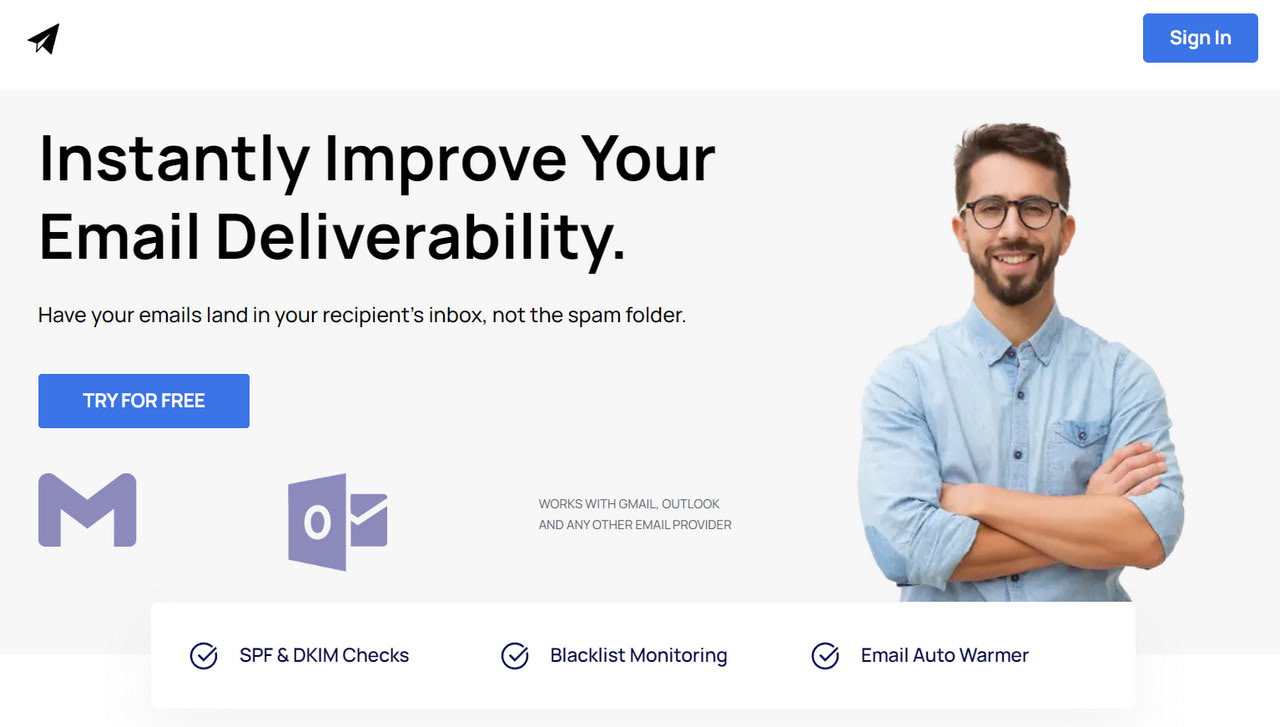
Its main capabilities are verifying and configuring SPF and DKIM and assisting non-tech-savvy email marketers in creating a DNS record. It closely monitors almost 100 popular email blacklist vendors and regularly checks on the sender’s reputation with various providers. It also has an in-built auto-warmer tool crucial for newbies in the niche to work their way up to an extensive subscription list without causing suspicion in ISPs.
MailTester
MailTester combines two core functionalities, providing email marketers with a unified platform for effective deliverability troubleshooting.
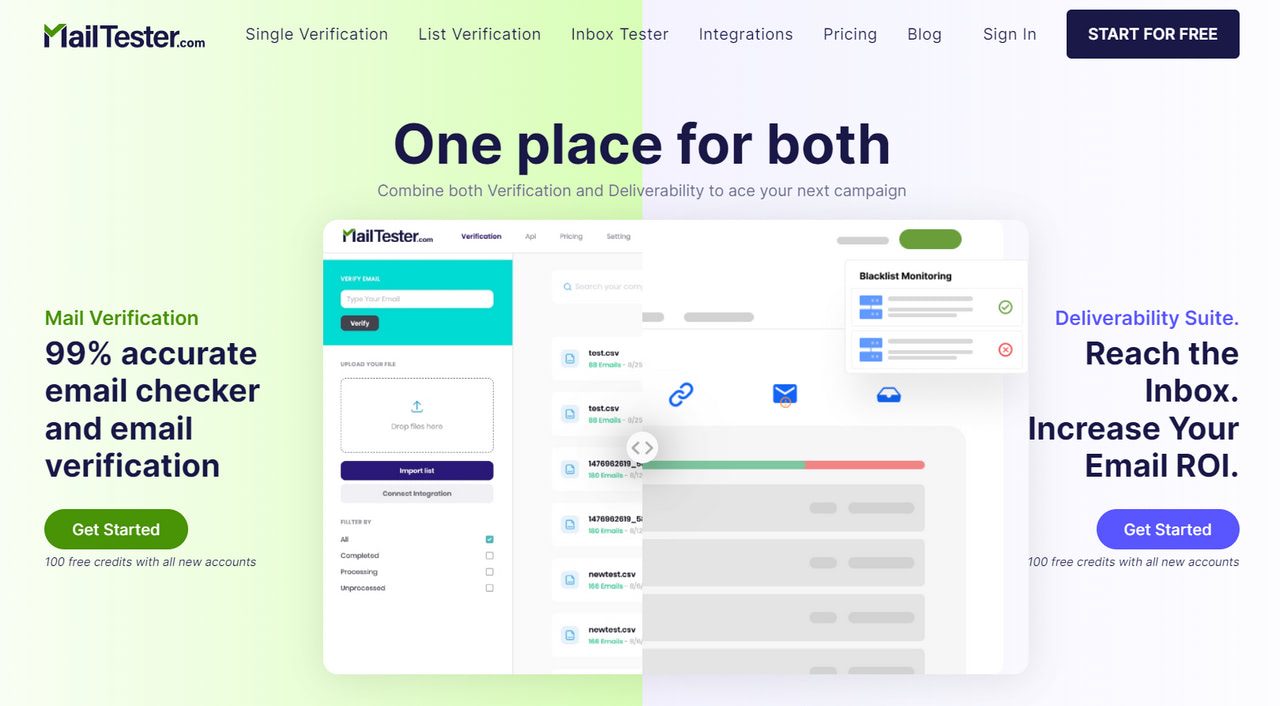
On the one hand, it is a sterling mail verification platform. It cleans subscription lists by spotting and removing spam traps using its AI-powered assistant, removes email contacts with invalid syntax and typos, and eliminates email addresses that match their regularly updated complainers database.
On the other hand, it is a powerful deliverability suite. Its main capabilities are risk validator, MTA validator, spam complaints checker, domain validator, and blacklist monitoring.
The best part is that MailTester supports integration with all popular services in the niche, including Mailchimp, Hubspot, and iCloud.
Alfred
Looking for a tool that can handle a large volume of emails and return accurate results? Look no more – Alfred is your full stop. Although it does not provide a thorough audit of email content and email systems like Unspam or CRM by Sendpost, but it does its prime job perfectly well, serving over 125 thousand customers across the Globe.

Alfred
Alfred offers real-time email verification and cleaning services for bulk email contacts that can be uploaded from all popular services. The tool integrates with over 85 platforms. It also comes with all the necessary instruments to validate emails directly at the entry point: registration form, newsletter signup, POS Terminals, CRM, and CMS.
Another huge benefit is that the system allows for automated routines. Connect your email provider or CRM, adjust settings, and enjoy a daily verification process that ensures your subscription list is clean and tidy.
Email List Validation
Email List Validation can become your powerful ally in mastering email sending reputation by fixing email deliverability issues caused by poor subscription lists. Its standout feature is cleaning email lists based on numerous criteria and complex algorithms that identify malicious email addresses like spam traps. It also runs blacklist checks to ensure you are not in one of the databases.
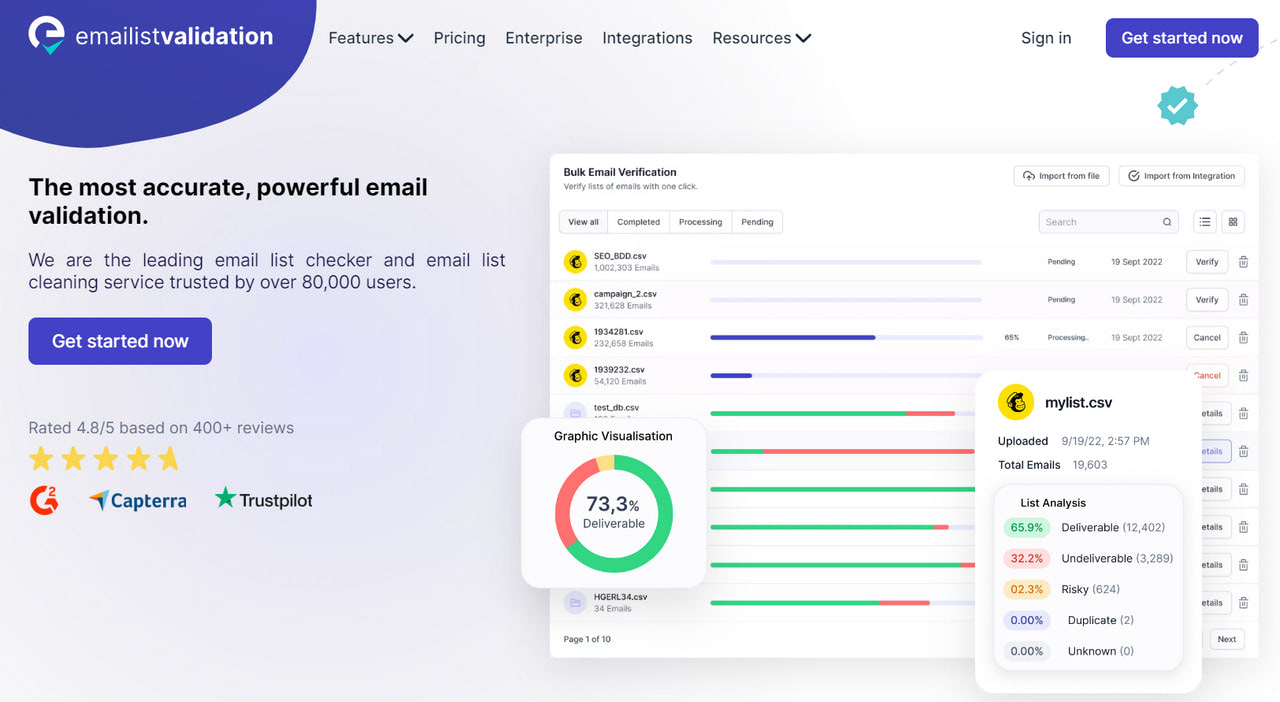
There is more. The platform uses essential tools to predict deliverability rates and determine inbox placement. It measures email performance based on the best practices and provides suggestions for improvement.
MXToolbox
Looking unsightly at first glance, MXToolbox is one of the most popular tools in the niche. From beginners to well-established companies, it has served a large market for decades. If getting insight into your system’s health is all you need for fixing email deliverability issues, then it is your guy.

MXToolbox is deprived of all hustle and bustle of multifunctional platforms and provides only instruments for domain lookup, DNS lookup, DMARC record check, IP and domain blacklist check, and email address health.
There is no fancy dashboard, AI assistants, or responsive support team; however, it is undoubtedly a great starting point if you are on a shoestring budget.
Email Deliverability CRM by Sendpost
Our list of tools for email deliverability troubleshooting will not be complete without an all-in-one solution provided by one of the big players in the arena. Sendpost stands behind this fantastic CRM. Although it comes with complexity, making it an option for big companies that have to manage tens of thousands of customers, you may still find some valuable tools inside that will help to level up the game if you have some extra money in the budget or your company is ready to take a next step.
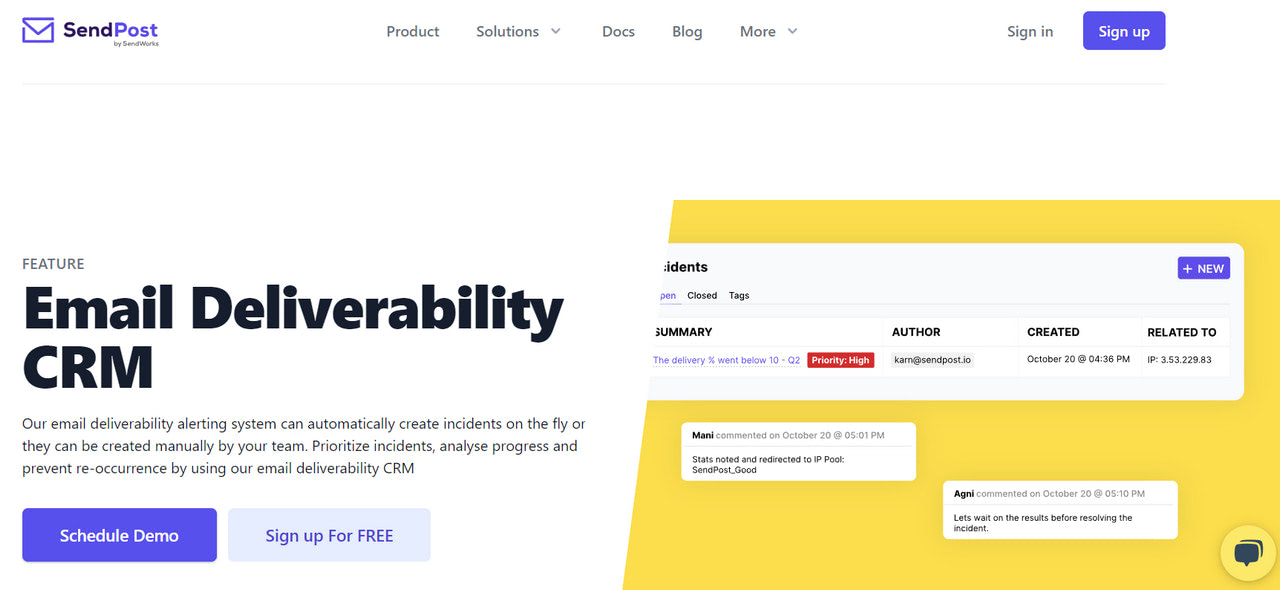
Email Deliverability CRM by Sendpost
The platform prides itself on performing these tasks:
- It checks email deliverability across all popular email providers.
- It identifies the top email deliverability incidents and builds institutional knowledge to prevent re-occurrence.
- It tracks and analyzes the progress made at infrastructure or customer levels.
- It automates the process through a range of tags that allow companies to adapt their routine to their needs and requirements, saving lots of precious time and money.
Conclusion
When the main email metrics (such as open and click-through rates) are dwindling, it is time to take a closer look at your email marketing program because it can be the first sign of email deliverability issues. However, there are other reasons for low deliverability: constant hard bounces, high spam complaints, poor sender’s reputation, and even an incorrect email domain authentication.
Whatever the cause is, you cannot stay ignorant because all your email marketing efforts will be nullified. Fixing email deliverability issues is a top priority if you want to proceed with an email marketing plan and enjoy this communication channel’s benefits.
The good news is that there are numerous tools for troubleshooting the problem. Some help spot malicious email contacts in the subscription lists, while others provide insights on faux pas in your email content and design that may trigger spam filters.
When choosing the platform, remember that maintaining a high deliverability rate is an ongoing process. Therefore, it is crucial to find a long-lasting partner that meets your needs and lets you pursue your marketing goals within your budget.


